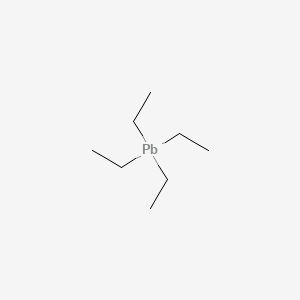Tetraethyllead / 25 g
Safety Information
Hazard Statements
Precautionary Statements
Pictograms
Properties
| Signal Word | Danger |
Product Description
Tetraethyllead is a chemical compound historically used as an antiknock additive in gasoline. Its primary function was to prevent knocking or pinging sounds caused by premature ignition of fuel within the engine cylinders. However, due to environmental concerns and health risks associated with its use, tetraethyllead has been phased out in most countries since the late 20th century. Today, it serves limited applications in certain industrial processes and research contexts.
Application
In modern times, the application of tetraethyllead is significantly reduced compared to its peak usage in automotive fuels. It finds very limited use in specialized industrial processes and scientific research, primarily for its chemical properties and reactivity. The handling and use of tetraethyllead require strict safety measures due to its toxicity.
Articles:
- Distribution and Excretion of Triethyllead in Rats
Publication Date: 1968
Wanda Bolanowska
https://doi.org/10.1136/oem.25.3.203
- Determination of Tetraethyllead and Inorganic Lead in Water by Solid Phase Microextraction/Gas Chromatography
Publication Date: September 1, 1996
Tadeusz Górecki and Janusz Pawliszyn
https://doi.org/10.1021/ac9601270
- The Rise and Fall of Tetraethyllead. 1. Discovery and Slow Development in European Universities, 1853−1920
Publication Date: June 2, 2003
Dietmar Seyferth
https://doi.org/10.1021/om030245v
- The Rise and Fall of Tetraethyllead. 2.
Publication Date: December 1, 2003
Dietmar Seyferth
